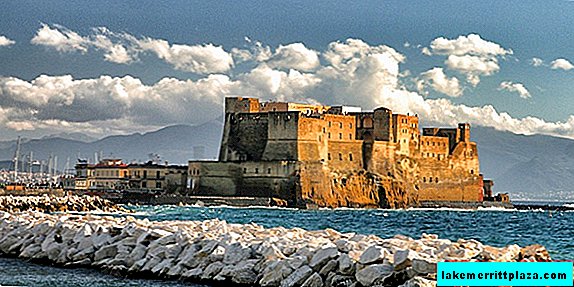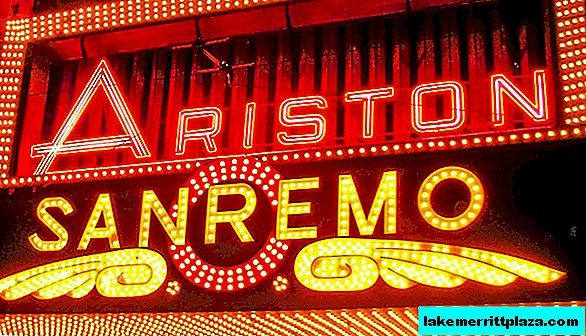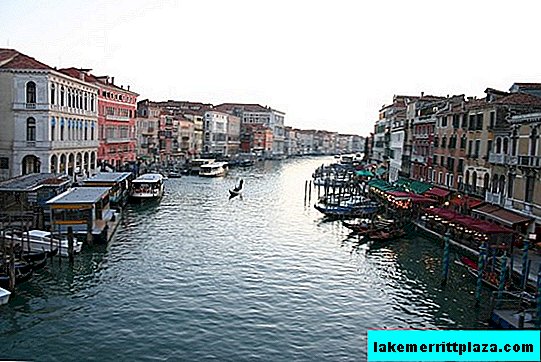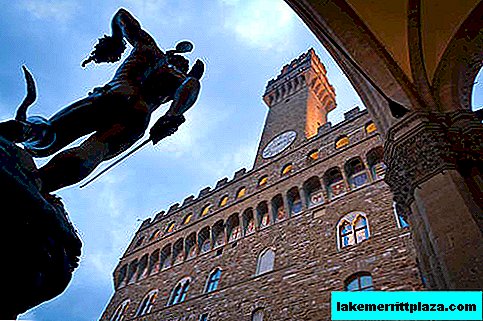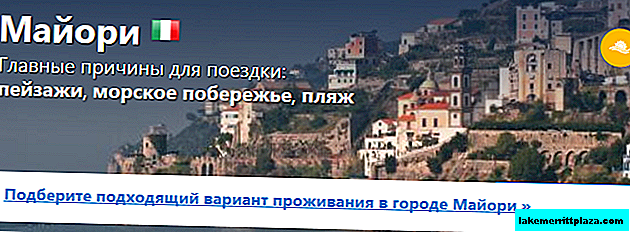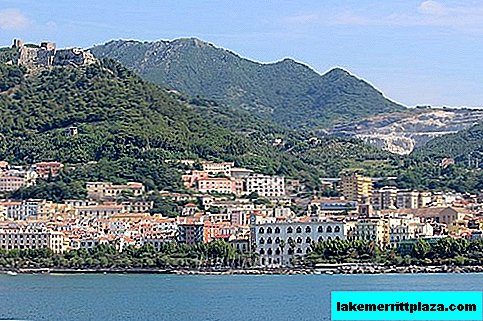Naples (in translation from ancient Greek - a new city) - a city in southern Italy, located on the shores of the Gulf of Tyrrhenian Sea of the same name. Naples is the administrative center of the Campania region and is the third largest city in Italy after Rome and Milan. The population of the city is about a million, and together with the suburbs - 3 million people. Naples has an international airport and a seaport. Regarding Rome, Naples is located 220 km southeast.
Naples was founded by the ancient Greeks in the VIII century BC, in those days the settlement was called Parthenopeia. In 327 BC the city was captured by the Romans, and for a long time it was part of the Roman Republic, and later the Roman Empire.
In the VI century, Byzantium owned the city. From the 7th to the 12th centuries, Naples was the capital of the virtually independent Naples Duchy. In 1139, Naples became an integral part of the Sicilian kingdom, and in 1266 became its capital. In 1224, a university was founded in Naples. By the 17th century, Naples was the second largest city in Europe after Paris, with a population of 300 thousand inhabitants. In 1860, the city became part of the state of Italy.
- See instructions: How to get from Rome to Naples
In Naples, built the stadium "San Paolo", which is home to the football club "Napoli". This is the strongest club in southern Italy. Napoli was founded in 1926 and has won the Italian championship twice in its nearly century-long history, is a four-time winner of the Italian Cup and a one-time UEFA Cup.

In 1984, the president of Napoli signed a contract with the famous Diego Maradona. “Barcelona” received $ 12 million for the Argentine, which was a record for a football transfer at that time. In 1990, Maradona was disqualified for 15 months after a doping test, which showed that the player uses cocaine.
What to see?
For centuries, Naples has been influenced by the cultures of various states, and the sights of the city are a vivid confirmation of this.
Egg Castle or Castel del Ovo
One of the main attractions is the Egg Castle (Castell del Ovo). The castle is located on the small island of Magaride in the south of Naples. According to legend, the poet Virgil enchanted the egg, put it in an amphora, placed the amphora in an iron cage, buried it in a cage, and built a castle above it.
Based on the statements of Virgil, the castle and the city can not be destroyed until the egg breaks. Legend gave the castle a name. The castle itself is a cluster of towers of different eras, which were combined into a single complex.
The existing castle was built in 1139 to protect Naples from the sea. For some time there was even a royal court. In the XVII century the castle became a prison. Today, the castle is open daily for tourist excursions from 8.00 to 19.00 on weekdays and from 8.00 to 14.00 on weekends.
New Castle or Castel Nuovo
Another interesting castle is Castel Nuovo (New Castle). The second name of the castle is Maschio Angioino (Anjou Donjon). After the transfer of the capital of the Sicilian kingdom from Sicilian Palermo to Naples, Karl of Anjou decided to build a residence for the royal court.
In 1279, construction began, which lasted five years. Castel Nuovo is a trapezoidal fortress with large round towers in the corners. On the tops of the towers are platforms with battlements and mashikuli. The height of the towers is 55 m. The fortress on three sides is surrounded by a moat, and from the fourth the sea once approached. The entrance to the castle is on the east side. At the entrance between the two towers is a marble portal decorated with statues and bas-reliefs.
Cathedral of saint january
The center of religious life in Naples is the Cathedral of St. January. This church, dedicated to the patron saint of Naples, was founded by Karl of Anjou. The foundation was two ancient basilicas. The construction of the cathedral and its consecration took place already under Karl's grandson - Robert.
The decoration of the chapel of St. Januarius is particularly striking; the famous Italian masters of the 17th century had a hand in its creation. The paintings of Luke Giordano and Perugino hang in the temple. The main relic of the cathedral is a vessel with the blood of St. January, sealed 17 centuries ago. The vessel is demonstrated twice a year to numerous believers who have arrived for this from distant places. At these moments, the frozen blood becomes liquid again. On May 19, 2005, Professor Hack made a report that blood thinning is not a miracle, but a simple chemical reaction. From this it followed that the church was deceiving the people, so some believers began to accuse the scientist of all mortal sins.
Royal Palace
Since the XVII century, the residence of the monarchs becomes the Palazzo Reale di Napoli (Royal Palace in Naples). Construction began in 1600 and lasted more than fifty years. This is a large three-story building, erected in the style of the late Renaissance. The facade of the palace is made of dark stone and brick, its decorative style resembles the buildings of Ancient Rome with their granite columns and inscriptions in Latin.
In front of the western facade are statues of the greatest Neapolitan kings. Equestrian statues stand to the sides of the garden gate - these are exact copies of statues from the Anichkov Bridge in St. Petersburg. The horses were donated by Nicholas I to King Ferdinand II of Bourbon. Behind the outer facade is the inner Courtyard of Honors, which is surrounded by a colonnade, forming a series of stone arches. Above the colonnade is a loggia - a covered arcade that connects all the premises of the second floor. There are 30 rooms in the palace, in which the authentic interior of the times of their senior owners has been preserved. Most of the building is occupied by the National Library, which stores thousands of books and a collection of unique papyri from the city of Herculaneum (Ercolano). Among the many rooms, it is worth highlighting the Hercules Hall, the Throne Hall and the Central Hall, which together with other halls make up the Museum of Historical Apartments of the Royal Palace.
Basilica of San Francesco di Paola
Opposite the Royal Palace is the Basilica of San Francesco di Paola. The design of the building belongs to the architect Pietro Bianca. The basilica was built on the model of the Roman Pantheon by Ferdinand I in honor of the return of the lost kingdom. The building was laid in 1817, and construction was completed 29 years later. The temple has a round plan. The interior is represented by many frescoes, paintings, statues.

In the center of the temple is the main altar made of hard stone. On the portico of the basilica there is a dedication inscription in Latin, and it is crowned with three sculptures of saints: Francis of Polanski, Ferdinand of Castile and Vera. The facade of the basilica is decorated with equestrian statues of kings: Charles III and Ferdinand I.
Umberto I Gallery (Galleria Umberto I)
Opposite the San Carlo Opera House, the Umberto I Gallery was built. This is a large pompous shopping arcade with a glass roof. The structure was built in Naples at the end of the 19th century, and it was erected in a neoclassical style. Initially, the construction of the passage was carried out to block many lanes and streets in the area of Toledo Street, which gained notoriety.
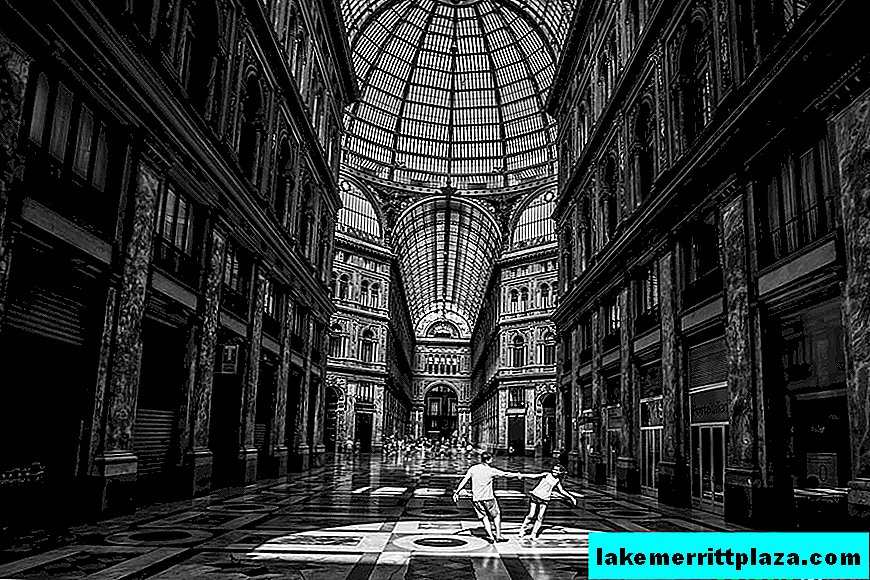
See a beautiful photo shoot in Naples
The author of the project was Emanuel Rocco, after which the structure was modernized in the years 1887-1890 by architects Antonio Curri and Ernesto Di Mauro, which gave it the features of the Neo-Renaissance. The construction is represented in plan by an octagonal cross with aisles of different lengths. The central part of the room is crowned with a cylindrical vault and is decorated with a large image of the Compass and the Zodiac circle. Long windows with patterned stained-glass windows and a huge dome make a strong impression. The glass ceiling has a height of 56 meters. Umberto I Gallery in general terms is very similar to the Milan Gallery Vittorio Emanuele II.
National Archaeological Museum of Naples
In the city center is the National Archaeological Museum of Naples. It is famous for a large collection of Greek and Roman ancient artifacts. This museum occupies one of the important places among the cultural centers of the whole world.
The museum building was erected in 1586 at the time of Don Pedro Girona - Spanish Viceroy. On the ground floor in fifteen halls of forty there is a collection of antique sculptures. The most famous are the statues of Aphrodite, Athena, the Farnesian Hercules and the Farnesian bull. Between the first and second floors are the famous mosaics discovered during archaeological excavations in Pompeii. The second floor of the museum is also very remarkable, here you should pay attention to the Hall of frescoes with frescoes from Pompeii, Stabia and Herculaneum, as well as the Hall of the Temple of Isis, in which, using genuine objects of art, the interior of the Temple of Isis in Pompeii is recreated.
Catacombs
The catacombs of Naples is the "kingdom of Hades," which is the exact opposite of the inexorably swift movement of modern Naples. Here is the kingdom of silence of the world of mysteries and secrets. Under the Neapolitan streets and houses, there is a whole catacomb city, in which there are more than 700 caves and long galleries and tunnels, from where the inhabitants of the city have been extracting tuff for centuries, using it to build homes, churches, squares and even city walls.
Here are ancient ritual crypts, underground sanctuaries - hypogee, ancient Roman aqueducts, ancient Greek caves, medieval tunnels, secret bourbon passages and underground passages. Among the items found during excavations there are specimens up to 5000 years old. The ancient Greco-Roman underground aqueduct system in some parts of the city was combined with the later system built in the 17th century. It was used by the townspeople until about 1885.
Today, the pipeline laid in ancient tunnels is still in use, but is in poor condition. Since 1989, the Naples Underground Association, under the supervision of the caver Enzo Albertini, has been conducting tours of the Greco-Roman catacombs.
The entrance to the catacombs is located at the church of San Paolo Maggiore. The first Christians secretly gathered in dark dungeons for prayers together.
The Catacombs of San Gennaro, dating back to the period of early Christianity (entrance from Via di Capodimonte), contain in their bowels several tombs of bishops (St. Januarius, whose remains are now in the cathedral, was originally buried here); numerous frescoes, the first image of St. January, Adam and Eve, the Good Shepherd. There is also an interesting stella dedicated to the cult of the son of Dionysus, Priapus, and the baptismal font of the 8th century.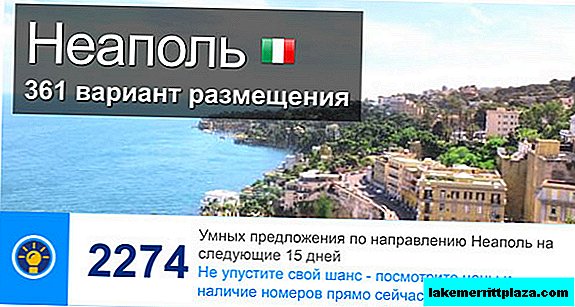
Transport
Naples has a very well-developed transport infrastructure. Public transport in the city is represented by buses, trolleybuses, trams, water transport, subway, taxi, as well as car rental.
The urban subway system includes four funicular lines: Montesanto, Chiaia, Centrale and Mergellina. The city is located on the hills, so the funicular plays an important role in the transport system of Naples. The funicular has 16 stations, and its average productivity is approximately 60 thousand passengers per day.
Naples is not only the administrative, but also the tourist center of Campania. Excursion bus tours to the archaeological zone of Pompeii and to the foot of Vesuvius regularly depart from here. Pleasure boats ply from the port along the Gulf of Naples to the islands of Ischia and Capri. Tourists seeking a break from the hustle and bustle of a big city can stay in one of the quiet towns of the Tyrrhenian Sea, for example in Sorrento, Amalfi or Salerno.


